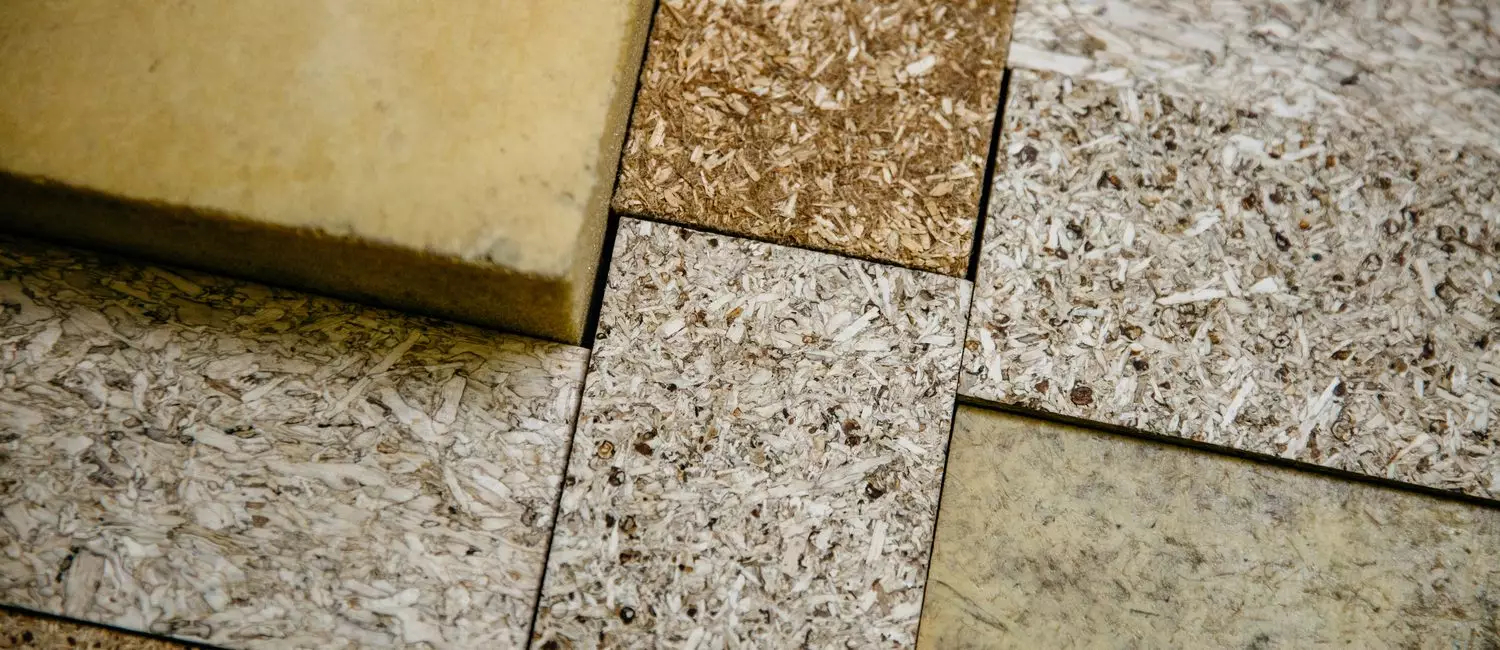


If there’s a way to squeeze value from wastes or brand-new materials, count on InnoTech Alberta’s Engineered Composites team to find answers. It’s something the team has been doing for years, ever since InnoTech Alberta opened the Engineered Composites panel pilot plant in 1987 to develop efficient, new uses of the province’s forestry resources.
Over three decades ago, companies, faced with decreasing mature timber, turned to places like the pilot plant to find alternatives. Working with InnoTech Alberta, a wholly owned subsidiary of Alberta Innovates, they focused on under-used trees like Trembling Aspen. Together they evolved ways to process the tree’s fibre, aligning wood strands in layers and bonding them with resins under pressure, to evaluate and optimize a strong new building material — oriented strand board (OSB). Today OSB is a big part of Alberta’s $6.5 billion forestry business.
“At the time Aspen was regarded as almost a weed. With OSB, it’s become hugely valuable,” says Dave Bilyk, InnoTech’s pilot plant coordinator.
Walk into the team’s two-story building in Edmonton Research Park, and you’ll see a lab scaled up to industrial proportions. There’s a mechanical debarker with chainsaw equipment to prepare logs. All around is machinery for producing strands, chips and particles, screeners to sift materials and conveyor belts leading to blenders and panel-forming presses. You’ll also find custom equipment like a small room-sized microwave with enough space to pre-heat layers of materials before pressing them into panels, or a 5-foot x 9-foot press that exerts pressures of up to 6.6 million pounds of force.
It’s in this environment that the 13-person team, that includes wood scientists, engineers and technologists, work closely with companies to test technologies to create engineered building materials — OSB, particleboard, medium-density fibreboard (MDF) or laminated timber. The research is wide-ranging. They’re experimenting with new ingredients — like wheat or rice straw — or different woods — aspen, pine, fir or even exotics like eucalyptus. Another area of interest is chemical additives to create more fire- and water-resistant products.
“Anything that scientists around the world can come up with to make building materials better, cheaper and more sustainable, they do it here,” says Bruce Mallas, InnoTech’s panel lab supervisor.
Not surprisingly, the facility has attracted a growing list of companies, not only in Alberta (where OSB manufacturers and chemical companies are clients), but across Canada, the United States, South America, Europe, Australia and Asia.
It’s research that’s helping not only individual companies but the industry’s future. Recently, for instance, the team collaborated with an Alberta manufacturer to develop new forms of wood composites. At the same time, it’s assisting companies in Asia to design and commercialize container flooring made from OSB. These efforts could reduce impacts on old growth forests and lead to new business for Alberta’s mills.
Now Engineered Composites is hoping to do the same for another material. Just recently, the team used hemp stalk to craft sound-absorbing panels as part of renovations for Edmonton’s Bell Tower. The stalk was supplied by InnoTech’s fibre processing pilot plant in Vegreville.
“What we’re hoping to do is create a future for panel products from materials — like hemp — that are just emerging,” Bilyk says.